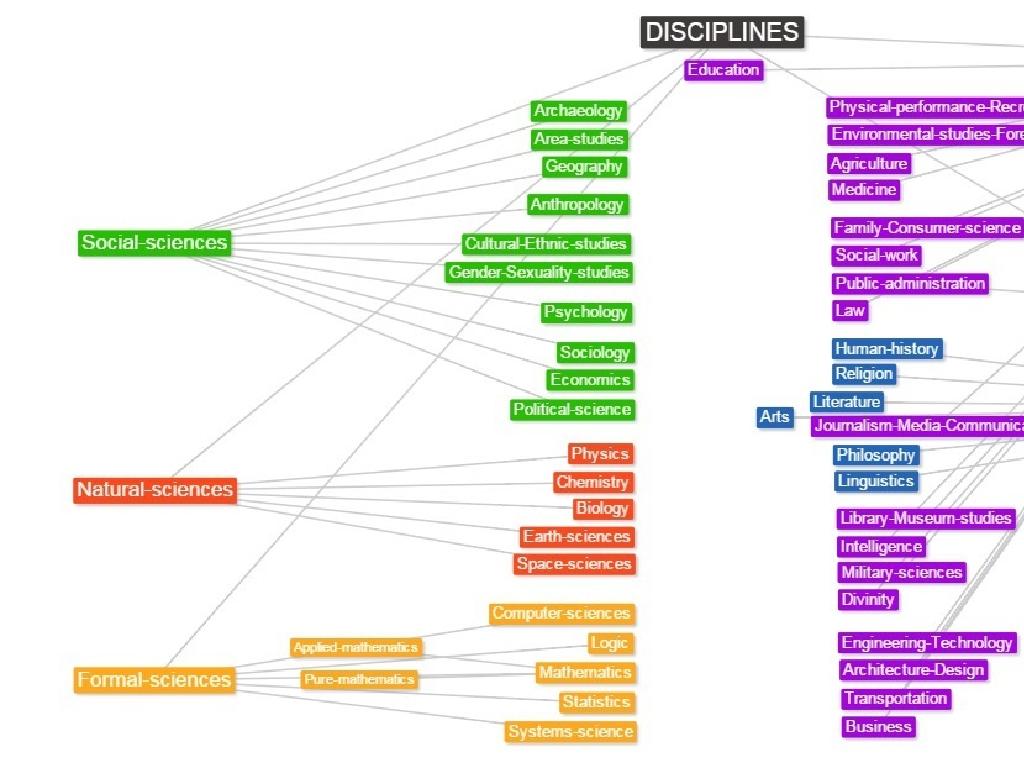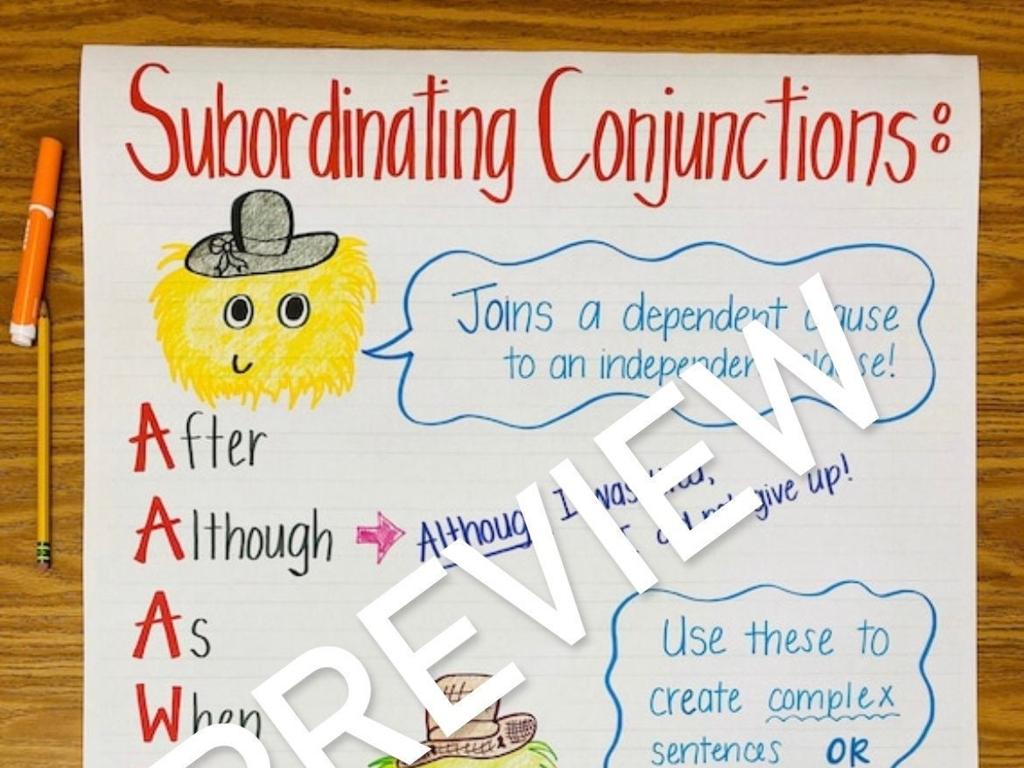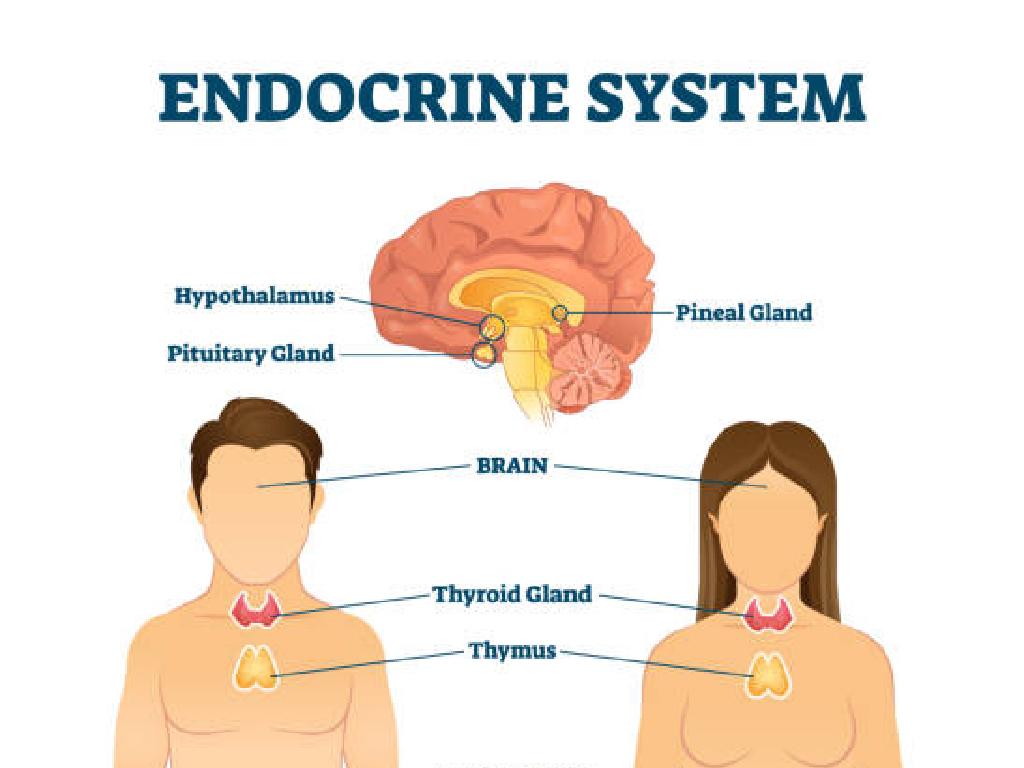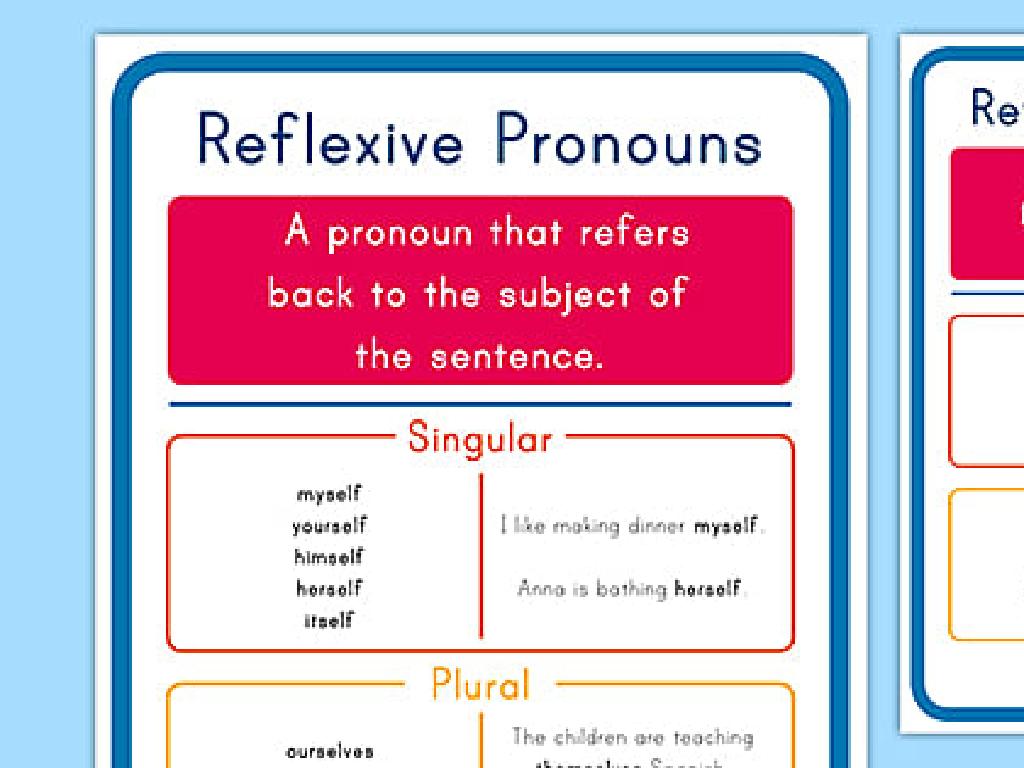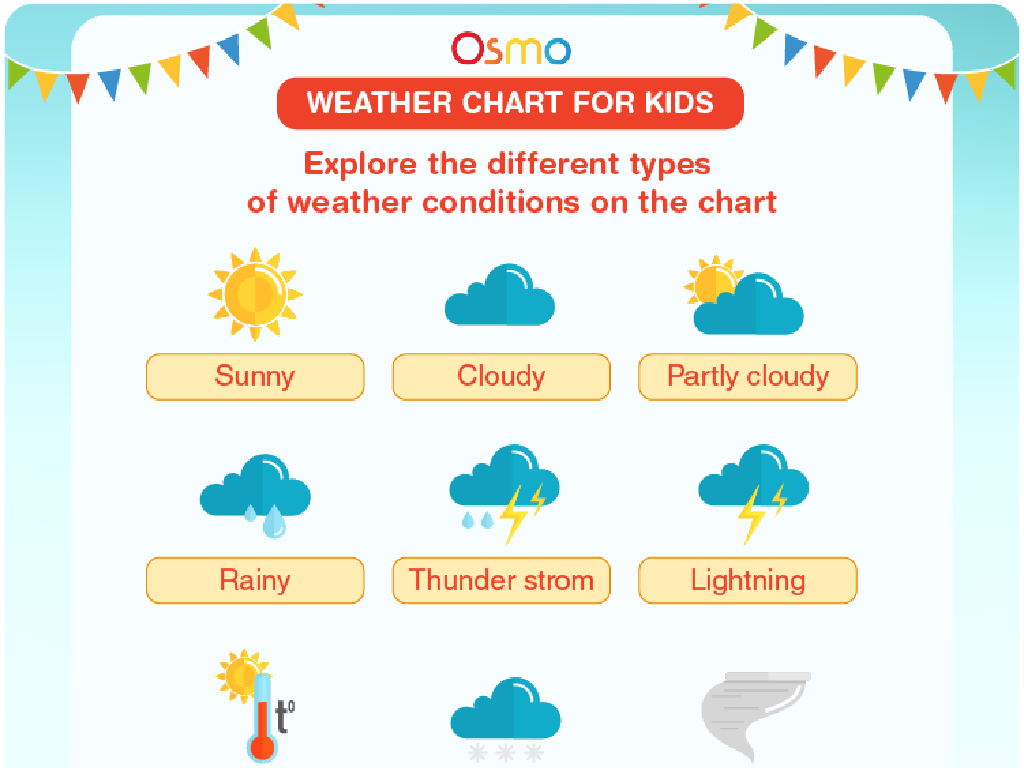Spell The Short Vowel Word
Subject: Language arts
Grade: First grade
Topic: Short Vowels
Please LOG IN to download the presentation. Access is available to registered users only.
View More Content
Welcome to Short Vowels!
– Learn about short vowel sounds
– Vowels can make different sounds
– Vowels: A, E, I, O, U
– These letters are vowels
– Short vowels in words
– Like ‘cat’, ‘bed’, ‘fish’, ‘dog’, ‘sun’
– Practice makes perfect
|
This slide introduces first graders to the concept of short vowel sounds, which are foundational in learning to read and spell. Emphasize the importance of vowels in the English language and how they can make different sounds. Use examples like ‘cat’ for ‘a’, ‘bed’ for ‘e’, ‘fish’ for ‘i’, ‘dog’ for ‘o’, and ‘sun’ for ‘u’ to illustrate short vowel sounds. Encourage students to practice by identifying short vowel sounds in words and by listening to how they are used in everyday speech. Plan activities where students can practice spelling with short vowel words and use visual aids to help them remember the sounds associated with each vowel.
Meet the Short Vowels
– A says ‘a’ as in ‘cat’
– E says ‘e’ as in ‘bed’
– I says ‘i’ as in ‘pig’
– O says ‘o’ as in ‘dog’
– U says ‘u’ as in ‘sun’
|
This slide introduces the concept of short vowel sounds to first graders. Each vowel is paired with a common word that exemplifies its short sound, providing a clear and relatable example for the students. The words chosen are simple and familiar to children of this age group, making it easier for them to grasp and remember the sounds. During the presentation, emphasize each vowel sound and encourage the students to repeat after you. You can also use visual aids like pictures of each item to reinforce the connection between the sound and the word. After the presentation, engage the students in a fun activity where they come up with other words that have the same short vowel sounds.
Listening to Short Vowels
– Listen for short vowel sounds
– I’ll say a word aloud
– Identify the vowel sound
– Is it a, e, i, o, or u?
– Practice saying the sound
– Repeat the sound after me
|
This slide is for a listening activity focused on identifying short vowel sounds in spoken words. The teacher will pronounce words clearly, emphasizing the short vowel sounds. Students will listen carefully and determine which short vowel sound is present in each word. The teacher should choose words with clear and distinct short vowel sounds to avoid confusion. Examples of words to use: cat, bed, sit, pot, and cut. After saying a word, pause to give students time to think and respond. Encourage them to articulate the vowel sound they hear and to practice saying it out loud after you. This exercise will help students become more familiar with vowel sounds and improve their phonemic awareness.
Spelling with Short Vowels
– Understanding short vowels
– Short vowels make simple sounds like ‘a’ in ‘cat’
– Spelling words with pictures
– I’ll show a picture, you guess the word and we spell it
– Practice spelling together
– Fun with short vowel words
– Games and activities to enjoy learning
|
This slide is designed to engage first graders in learning to spell words that contain short vowels. Start by explaining what short vowels are and the sounds they make. Use visual aids like pictures to help students connect the sound to the spelling of the word. For example, show a picture of a cat and guide them to spell ‘C-A-T’. Encourage the students to say the letters out loud as they spell. Incorporate fun activities and games to reinforce the learning, such as a spelling bee or matching games. The goal is to create an interactive and supportive environment where students feel comfortable practicing and making mistakes as they learn.
Practice Time: Spelling with Short Vowels
– Listen to the spoken word
– Write the word on your paper
– Focus on the short vowel sound
– Examples: ‘hat’, ‘bed’, ‘sit’, ‘dog’, ‘cup’
– Check if the vowel sound is correct
– After writing, say the word to check the vowel sound
|
This slide is for a classroom activity focused on practicing spelling words with short vowels. The teacher will say words aloud, and students are expected to write them down, paying special attention to the short vowel sounds. It’s crucial to remind students to listen carefully for the vowel sounds in the middle of the words. After writing, students should say the word out loud to themselves to ensure the vowel sound matches what they heard. For the teacher: Prepare a list of words with short vowel sounds appropriate for first graders. Walk around the classroom to assist and correct as needed. Encourage students to practice saying the words out loud after writing to reinforce the correct vowel sounds. Provide positive feedback and support throughout the activity.
Fun with Short Vowels: Jumping Game
– Learn short vowels through play
– Listen to words carefully
– Jump to the short vowel sound
– For example, if you hear ‘cat’, jump to ‘a’ for the short ‘a’ sound.
– Enjoy the vowel game
|
This interactive game is designed to help first graders recognize and understand short vowel sounds in a fun and physical way. The teacher will say words out loud, and students will jump to the area of the room or a designated spot that corresponds to the short vowel sound they hear in the word. Before starting, ensure that each vowel (a, e, i, o, u) has a clear space or marker for students to jump to. Demonstrate with a few examples, like ‘hat’ (jump to ‘a’), ‘bed’ (jump to ‘e’), and ‘pig’ (jump to ‘i’). This activity not only reinforces phonemic awareness but also helps to burn off some energy. After the game, discuss with the students how they determined where to jump and what clues helped them identify the vowel sounds.
Class Activity: Vowel Hop
– Let’s play Vowel Hop together!
– Listen to the word I say out loud
– Hop to the vowel sound you hear
– Practice short vowel sounds
– Examples: ‘cat’ (hop to ‘a’), ‘bed’ (hop to ‘e’)
|
This activity is designed to help first graders recognize and remember short vowel sounds through a physical and fun activity. Set up five spaces in the classroom, each representing one of the vowels (a, e, i, o, u). When you say a word, students will hop to the space of the vowel they hear in the word. For example, if you say ‘mat,’ students should hop to ‘a.’ This kinesthetic approach to learning caters to different learning styles and helps to reinforce phonemic awareness. Make sure to articulate words clearly and repeat the activity with different words to ensure all students have the opportunity to participate and learn.
Review and Goodbye: Short Vowel Sounds
– Congrats on learning short vowels!
– Recall the short vowel sounds
– Can you say the sounds for a, e, i, o, u?
– Practice spelling with short vowels
– Try to spell ‘cat’, ‘bed’, ‘sit’, ‘top’, ‘mud’
– See you next time!
|
This slide wraps up the lesson on short vowels. It’s a moment to praise the students for their hard work and to reinforce the learning by asking them to recall the short vowel sounds. Encourage them to practice spelling words with short vowels at home to strengthen their understanding. Provide examples like ‘cat’, ‘bed’, ‘sit’, ‘top’, and ‘mud’ for them to practice with. Remind them to keep listening for these sounds in words they hear every day. End the lesson on a positive note, looking forward to the next class.

